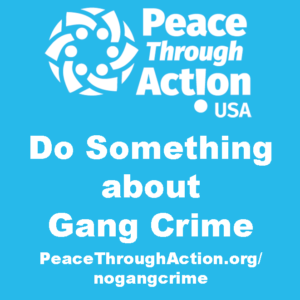What is gang crime?
A gang refers to two or more people organized to achieve a common objective and who share a common identity,[1] while crime refers to an action or activity that is against the law.[2] Therefore, gang crime is the result of illegal actions or activities committed by a group of two or more people in an organized unit. In the United States, gang violence in the United States refers to criminal and non-political acts of violence committed by gangs regularly engaging in criminal activity.[3]
[1] U.S Legal (2016). Gang Violence Law and Legal Definition. Retrieved April 9th, 2018, from https://definitions.uslegal.com/g/gang-violence/.
[2] Cambridge Dictionary (2018). Crime Meaning. Retrieved April 9th, 2018, from https://dictionary.cambridge.org/dictionary/english/crime.
[3] U.S Legal (2016). Gang Violence Law and Legal Definition. Retrieved April 9th, 2018, from https://definitions.uslegal.com/g/gang-violence/.
How widespread is gang crime in the United States?
Accurate data collection on gang crime is challenging. However, what is clear from statistical data is that gang membership and related crime has been increasing since 2005.[4]
- In 2005, it was estimated there were 26,700 active gangs in the United States, which increased to 30,700 in 2012.[5]
- Gang-related homicide increased by 28% from 2011-2012, with Chicago and Los Angeles reporting that 50% of all homicides there were gang-related.[6]
- In 2017, there were an estimated 1,150,000 people in gangs.[7]
- For gang crime activity in 2017, it was estimated that 63% was related to drug trafficking and 44% to assault.[8]
[4] National Gang Centre (2012). Measuring the Extent of Gang Problems. Retrieved April 9th, 2018, from NGC https://www.nationalgangcenter.gov/survey-analysis/measuring-the-extent-of-gang-problems.
[5] Ibid.
[6] Ibid.
[7] Statistic Brain (May 2017). Gang Member Statistics. Retrieved April 9th, 2018, from https://www.statisticbrain.com/gang-statistics/.
[8] Ibid.
What culture changes and public policies are necessary for preventing gang crime?
With a 2017 estimate that 40% of gang members are under the age of 18, young people joining gangs at an early age is a national problem.[9] Reasons young people might join a gang include protection, enjoyment, money, respect, and if their friend is in a gang[10]. If young people are able to access opportunities like education, training, and employment within their local communities, they are less likely to turn towards gang membership. They will also gain a sense of belonging within their communities by contributing to the local infrastructure. Furthermore, public policies need to address the perception that young people must join a gang for protection by reducing violent crime and providing non-violent alternatives.
[9] Ibid.
[10] U.S Department of Justice (December 2010). Juvenile Justice Bulletin. Retrieved March 28, 2018 from https://www.ncjrs.gov/pdffiles1/ojjdp/231116.pdf.
What practical solutions are effective for gang crime?
If a community is facing a gang crime problem, they should conduct a gang-problem assessment to ascertain where gangs are operating and which community members are at risk of joining them. This will allow communities to deliver targeted interventions, such as delivery of The Gang Resistance Education And Training (G.R.E.A.T.) program. G.R.E.A.T is a 13-week middle-school program delivered by police officers on the dangers of gang involvement, aiming to de-glamorize life as a gang member.[11]
[11] Ibid.
What can I do to prevent or stop gang crime?
- Educate yourself and others – Understand the role of gang crime in your community by carrying out a gang-problem assessment. Use this Department of Justice tool to help you. Once established, share this information with other community members and discuss which interventions are most suitable.
- Talk to young people in your community – With 40% of gang members being under the age of 18, it is important to understand if young people in your community are tempted to join a gang. If they are, try to understand why and help them find a non-violent alternative.
- Set up non-violent zones – If gang crime is already a problem in your community, establish a non-violent zone or time of day for a peaceful ceasefire of gang activity. This can be centered around a school or faith institution and can also provide a space for education and training of gang members or potential gang members.
- In case of emergency – If you are experiencing or witnessing an emergency, call 911 or try to get to a location where others can observe your distress and intervene.
Information Sheet-Do Something-Gang Crime (PDF)
Have a suggested improvement to this information sheet? Send it to inbox@peacethroughaction.org
Do Something Right Away to Increase Peace
Subscribe to our YouTube channel
Give a gift of money to support our mission delivery activities
Choose opportunities to take part in our #PeaceBeginsWithWe campaign

